
Three-time Academy Award winner, four-time BAFTA winner and Pixar Chief Creative Officer Pete Docter is receiving the prestigious Winsor McCay Award at the 2023 Annie Awards on Saturday February 25th. You can watch the ceremony live that evening at 10pmET / 7pmPT at AnnieAwards.org. In this Exclusive Animation Scoop Q&A, Docter reflects on his career, sharing insights on his four directorial features (“Monsters, Inc.”, “Up”, “Inside Out” and “Soul”), as well as Pixar’s first film (“Toy Story”) and next film (“Elemental”). This interview was edited for length and clarity.
Jackson Murphy: Congratulations on receiving the Winsor McCay Award. How does it feel to get this incredible honor from the Annie Awards?
Pete Docter: Well, it’s pretty crazy. I was looking at the list before. First of all, the luminaries of the whole thing — starting with Winsor McCay himself, who’s kind of the first character animator, really. And then my second thought is, “Am I really that old? Is this a Lifetime Achievement thing?” I feel like I’m just starting and figuring this out!
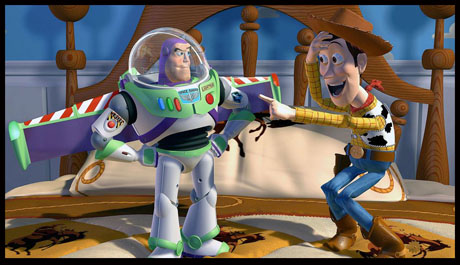
JM: You’ve had an unbelievable career in animation, and we’re going to go through some of the highlights. But do you have a great speech prepared already? You’ve made many throughout your career.
PD: No, I don’t. I have to think about that. I haven’t really thought too much, other than Thank You. I think it might be an opportunity to talk about some of the influences and people who were influential in my career, which will be fun. Chuck Jones and people I worked directly with. I got to hang around quite a bit with Joe Grant, who’s one of the guys who co-wrote Dumbo and chose music for Fantasia. He actually came-up with the title Monsters, Inc. A lot of great people I’ve had the good fortune to work with.

Pete Docter
PD: It was not something that had been done. I think people’s general association with computer animation was logos that were flying at you. And they were like, “I don’t want to watch that.” The idea that we could embed character-based animation into computer stuff… I don’t think people had seen a lot of it. Even within the studio at Disney, the look of the film did not make itself clear until the last couple months. So we’re working on this thing for three years. First of all it’s like weird Tron wireframe stuff and people are like, “I don’t even know what I’m seeing here.” And only at the very end did we have the computing power to put all the lighting, shading and textures together. So it was not apparent what it would be until just months before we finished. It really took a lot of people by surprise. Internally as I was working on it, it felt very much like being at school — working on something with your friends… maybe in a garage. When it finally came out, I was pretty shocked that people were even seeing it. To me, it was just something we were doing here for fun. And then the fact that people liked it and treated it like a movie, not like some weird science experiment, that was the ultimate receipt.
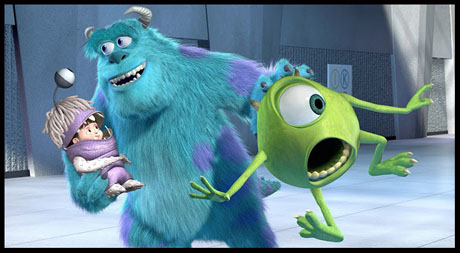
JM: Yeah. Changed the animation world forever. We go to “Monsters, Inc.” (2001) I think it’s the Pixar movie that I liked when I was young but as I’ve gotten older, I have appreciated the themes, the values and the messages of it more than maybe any other Pixar movie. What kind of reception did you receive at the time from older and younger people, and have you seen that over the years — people appreciating this even more?
PD: That’s interesting. I’m curious. Can you put into words the things that stick in your mind in that regard?
JM: I think it’s the Sully and Boo dynamic. I now have a five year old cousin. It’s an older person and a younger person… and you also do that quite well with Up. That heartwarming aspect… on top of the comedy, Billy Crystal and the doors… that really gets me.
PD: I think that was something we kind of stumbled into because… Toy Story surprised me because so many friends would say, “I love that movie. I secretly thought my toys came to life too when I wasn’t looking.” I was actively searching for something like that that we all believed in. I knew that there were monsters living in my closet waiting to scare me. We started exploring that. And then as part of that, we realized pretty quickly the monster / little kid relationship is key. And in so doing, I think we stumbled into mythic… I’m not saying the film is mythic by any stretch… but there are these prototypical relationships of Frankenstein and a little kid. These big, hulking, powerful beings and something very innocent and small that needs protecting. I feel like that was central to why that film worked and why people connected to it. I wish I could say we were smarter about it. It was just something we kind of discovered as we made the film. In fact, that’s pretty consistent in all the stuff I’ve worked on. The one consistent thing is: I don’t know what I’m doing when I start out and we just make it up and discover it as we go.
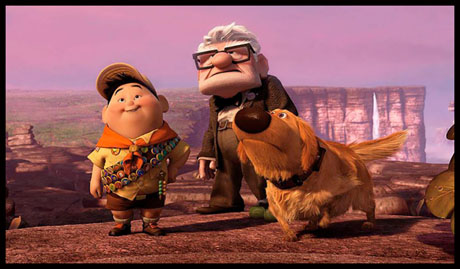
JM: You do it so well. When it comes to “Up” (2009)… at the time when it was released, I was spending a lot of time with my grandmother and seeing that bond of a young person and an older person… I think it also broke ground. We get a lot of these grandparent / grandchild relationships in sitcoms, dramas and various shows that have come along since Up, but this was the [movie] that really put this out there in the mainstream. Could you really feel that as you were making “Up”?
PD: Yeah. And it was a bit of a head scratcher for most people as you talk about it. Okay, it’s an action/adventure starring an old man. And that sort of gets a smile but people are like, “I don’t want to watch a movie about an old guy.” We’re very youth-centric in the U.S. in our entertainment, generally, so the idea of doing something really featuring not just a character who’s old but the issues that faced people… that lack of power that happens as you get older. They can’t make decisions anymore and things slowly get taken away from them. We were really embracing that and people were like, “I don’t know that this seems fun and funny.” (laughs) Obviously there are a lot of other aspects of the film that try to balance and counter that. I would really credit Bob Peterson, co-director and writer, finding a lot of things, like Carl cracking his back. Why is that gonna be funny? Or Carl slowly going down the stairs on the power [seat]. All of those things we tried to have fun with that happen to us as we get older. And now I’m starting to feel more and more like Carl everyday.
JM: (laughs) “Inside Out” (2015): When I saw the film it was a Fathom Events screening. You and Amy Poehler were in Australia. There was a Live Q&A afterwards.
PD: Oh yeah. I remember that.
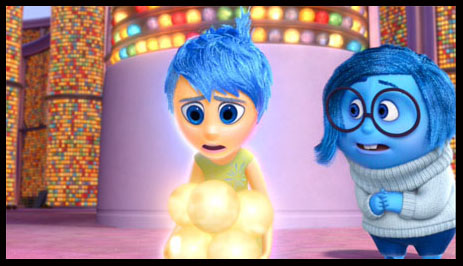
JM: It was cool getting to learn the inside process of that movie. Amy Poehler had done a lot of voice work before this but what she dug deeper than ever before when it came to a role. What is that relationship like between a director and a lead voice actor, especially someone like her who had to put so much into Joy?
PD: It becomes pretty intimate… pretty personal. Actors are amazing. They put themselves out there. And depending on the actor, they’ll let you in more or less to the process. Amy totally got and connected with what we needed. She almost directs herself. All I would have to do is say, “Okay, here’s what’s going on in the scene.” And she’d be like, “Got it!” She nails the comedy. She knows what’s needed for the drama. There were one or two scenes… I think the vulnerable stuff at the end of Act II where she’s stuck in the memory dump and memories are disappearing. She did it and I was like, “Okay, that’s good…” We had a talk between takes and I don’t remember exactly what I said but we talked about where the character was and the need to really feel it and be truthful. “I really need to feel this.” And she’s like, “Alright.” We even turned the lights down a little bit and it was heartbreaking. I don’t know where she went in her mind but she really dialed into that moment and brought so much to it. Assuming you get along with the actor, it’s really a cool thing because they come along on this weird, magical, imaginary journey and bring it to life.
JM: Absolutely. “Soul” (2020): Last time we spoke was over Zoom — with one of the first animated movie junkets over Zoom.
PD: Oh yeah.
JM: You’ve won more [Best Animated Feature] Academy Awards than anyone else. This was your third Oscar win, and in your speech you thanked teachers. I think there are so many teachers showing your films, whether it’s in animation school or otherwise, all across the world. What does that mean to you, that films like “Soul” (which has so much meaning to it) are being shown to kids / students all over the world?
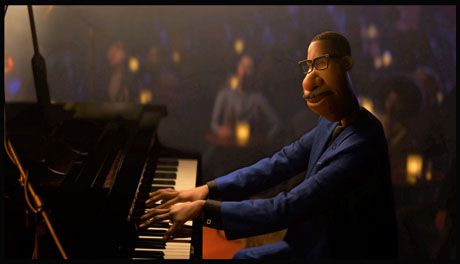
PD: Well if that’s true, that would be really cool. And I have heard, I think “Inside Out” more than anything, teachers talking about using it as a model or a discussion point for students to break down. The other thing I would say we’ve tried to do with our films is to physicalize things. If I sit and explain to you the story for “Soul” or for “Inside Out”, I think most people are like, “What?” But if you show it to them, even little kids get it and totally understand it. So making it visual, which is of course, another thing you learn from watching Chuck Jones cartoons and the early Disney films. Everything is so visual. There’s such a reliance on that and less dialogue. I think we use way too much dialogue! I was just talking with one of the directors here about that — our over-reliance on dialogue. We gotta go back to the roots of animation and figure that out.
We never wanted to make films that seem lecture-y or seem like lessons. You just want to touch people. That’s the reason you’re making these movies — to make people feel something. If it can bring along some ideas… My goal with Soul was, “I would love for this movie to end and people to look at each other and go, ‘We gotta go get an ice cream or a coffee and talk about this.’ I would love to engage people in some of these deeper conversations that we don’t typically get into in everyday life.” You’re like, “What’s for lunch? Oh, we’re late!” Those kinds of things are where we stay most of our lives. But there’s some really deep, meaningful stuff that could change the way you act in daily situations if you stop and really analyze and think about it a little bit.
JM: Soul had incredible visuals and music and story. As the Chief Creative Officer at Pixar, you’re overseeing some really cool upcoming projects. “Win or Lose” is a series that’s going to be on Disney+ [later this year]. We’ve got “Elio” and “Inside Out 2” [for 2024]. “Elemental” is coming this June. What excites you about the future at Pixar?
PD: Well just taking any of those as an example, but I’ll take “Elemental”: it’s a film that’s kind of like what Pixar does best in its sense of great, specific characters, relationships that are really entertaining, heartwarming and funny. But it’s also a look that we’ve never done before. You’re gonna see visuals that kind of make your jaw drop. People have talked to me about, back on Monsters, Inc., seeing Sully fall in the snow with his fur blowing in the wind and going, “WHAT?! What am I looking at?!” I feel that watching “Elemental”. It’s nothing you’ve ever seen. And I feel like that’s what we strive to keep doing — surprising the audience really by surprising ourselves and trying to push things in a lot of different ways.

From the forthcoming feature, ELEMENTAL
- INTERVIEW: Strap In For “Mars Express” - April 30, 2024
- INTERVIEW: Jeff Fowler On “Knuckles” And “Sonic 3” - April 22, 2024
- INTERVIEW: “Inside Out 2” Director And Producer On Pixar Sequel - April 16, 2024


 February 13th, 2023
February 13th, 2023  Jackson Murphy
Jackson Murphy  Posted in
Posted in  Tags:
Tags: 






